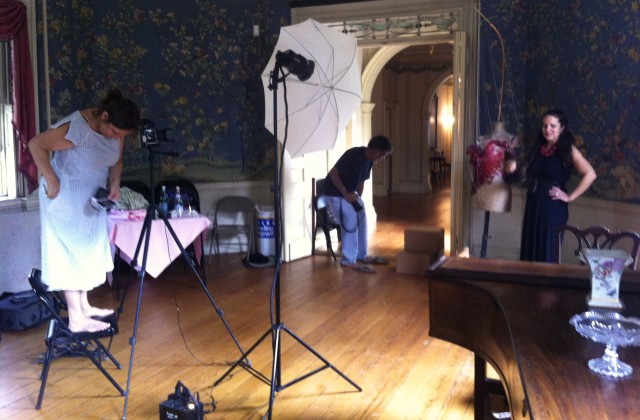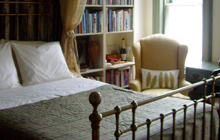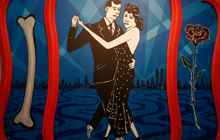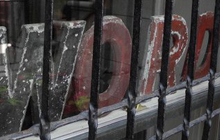An Exhibit of Corsets Suggests Aaron Burr, Infamous Duelist, Was a Feminist
“There never was a greater villain that Aaron Burr…” begins a Harpers Monthly article from 1857. “His whole life is intrigue. Woman was his spoil.” Burr, the country’s third vice president, infamous duelist (who mortally wounded Alexander Hamilton), and black sheep of the founding fathers, was certainly no puritan when it came to sex. Centuries later, Burr’s dirty laundry — he had multiple wives and some 12 mistresses — is being aired out. Seven bespoke corsets inspired by the women in Burr’s life mingle amid the antiques and curios in the period rooms of the Morris-Jumel mansion in Washington Heights, Manhattan’s oldest private home.
Inspired by Burr’s multiple and multifarious relationships with his wives and mistresses, Camilla Huey — couturier to Oprah, Adele, and Katy Perry, and designer behind the bespoke label House of Execution — constructed seven corsets based on each woman’s height, measurements, and personal taste. Portraying Burr’s two wives, and many mistresses, as well as his daughter, through the lens of material culture, Huey uses corsetry as an alternate form of portraiture. “I wanted to expressively personify these women,” she explains in her artist statement, “while gaining perspective on their world within the genre of biography using fashion.” Huey’s corsets confer visibility and volume onto women who have been consigned to the appendices of history. As for Burr, the exhibition casts him not as a debauched womanizer but as a misunderstood proto-feminist. A radical revolutionary, he considered women as intellectually equal to men, advocated for women’s suffrage and abolition, and even hung a portrait of the outspoken English writer Mary Wollstonecraft in his dining room.
Margaret Moncrieffe, the fourteen-year-old British spy Burr seduced while he was quartered in the Jumel mansion during the Revolutionary War, is imagined to wear a blue corset with red laces. A first edition copy of her memoirs lies alongside a small bouquet of flowers. At the end of his life, the disgraced Burr would return to the Mansion as the fortune-hunting second husband of socialite Eliza Jumel, the richest and most scandalous woman in New York. Jumel, a rumored prostitute turned flamboyantly wealthy widow and real-estate tycoon, divorced Burr on his deathbed over his alleged infidelities and for embezzling thirteen thousand dollars of her fortune.
The earnest symbolism of Huey’s project — her reliance on corsets as a metonymy for women — might seem a bit goofy and simplistic to viewers accustomed to open-ended artworks with ambiguous meanings. In order to emphasize the intellectual autonomy of Burr’s lovers, she stuffs the corsets with transcriptions of the women’s letters, books, and fragments of correspondence. “Binding,” the artist explains, “is a term that applies to the bookbinder as well as to the staymaker’s art.” Corsetry, a conventional symbol of patriarchal oppression, becomes a vessel for language and a marker of subjectivity. Heuy’s feminist retelling of history is well-intentioned; and her beautiful, exquisitely executed couture pieces are a breath of contemporaneity in the Morris–Jumel Mansion’s hallowed halls. As art objects, however, they aren’t as titillating as the bodice-ripping gossip they resurrect.
The Loves of Aaron Burr, May 3 – September 22, 2013, Morris-Jumel Mansion, 65 Jumel Terrace, NYC

 Jumel Terrace B&B
Jumel Terrace B&B Life Turns Man Up & Down
Life Turns Man Up & Down The Private Library
The Private Library